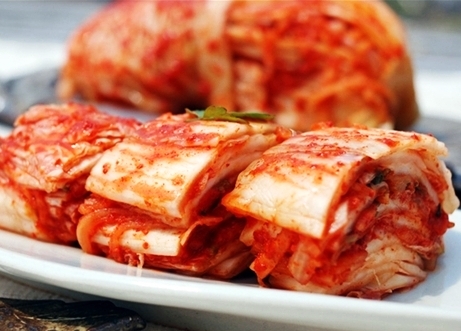
How to Ripen Kimchi
Everyone has a different preference as to when Kimchi(김치) tastes the best – some love eating freshly made, raw kimchi (kind of tastes like a salad); some love eating it when it is just perfectly ripe and then there are those who love sour kimchi (신김치 shin kimchi) which has basically over fermented and obviously tastes quite sour. But one thing is for sure – no one likes the stage when it is in the in-between stages of being raw and ripe. Kimchi really does not taste good at all when it is in the process of getting ripe – I had an aunt who used to call this the time when kimchi has gone CRAZY! And you certainly don’t want to eat the kimchi when it’s crazy! 🙂 So here’s how to ripen Kimchi and avoid CRAZY kimchi.
Since most of us now buy kimchi from the store, let me first write about the best way to eat a store bought kimchi. Too often, I hear people say that the kimchi served at our house tastes great, but when they try the same brand themselves, they think it doesn’t taste nearly as good. I realized it was because they don’t take the time to ripen it properly and then also forget to serve it cold (right out of the fridge). I found that most kimchi (even the poorly made ones) will taste quite palatable when they have had time to ripen properly.
Now, the hard part about buying kimchi from a store is that it is hard to tell at what stage of the fermentation process they are in. One clue is the appearance of the vegetables. They will look more shriveled up if they are further along in the fermentation process. And the chances are that it will also have lost a bit of the juice because the content will start to bubble and balloon up when it ferments which ends up usually overflowing out of the jar. This is actually too bad because kimchi should always be immersed in its own juices for it to taste the best.
The best way is to buy the freshest kimchi possible and bring it home and ripen it from the beginning. But this is usually not possible…So far, I have found the best tasting kimchi that you can buy are actually the ones that are directly imported from Korea (종가집Jongajip is my favorite). It is expensive but worth it in my opinion as long as it hasn’t traveled too far or stayed on the shelf too long at your store. Other than that, the next best thing is to try to buy kimchi that is made locally if it’s available (less chance of it over ripening) and when you bring it home, open it, smell it or better yet, taste it. If your store has a fast turnaround, it is probably in the “crazy” stage.
If it’s already fully ripe, put it in the fridge in the coldest possible setting. If it’s not yet fully ripened and you can wait, let it ripen in your fridge. This will take about 2 weeks in your fridge. Also note that the juice may overflow so either move the kimchi into a bigger container or take some out (1/5th) and leave some room for the kimchi to expand. If your kimchi is still very fresh, not at all ripe and you need to eat it quickly, you can ferment it at room temperature.
In the summer, Kimchi will ripen in 12 ~ 18 hrs and in cooler weather it can take about 24 – 48 hrs. Just check every 4-6 hrs.
If this is all too much info for you to digest, I have a chart at the bottom of this post that can help you with the process. (Boy, it’s been ages since I drew up a flowchart…brings back memories from my college days of hand drawing the charts using graphic rulers..)
What is the ultimate best way to ripen or ferment kimchi?
The most delicious and fantastic kimchi is made when it is fermented the old fashioned way…In a traditional Korean clay jar, buried in the ground in winter time. Even though the ground freezes in the winter, the jar and the saltiness of the kimchi keep it from freezing completely. This is called 김장김치 (kimjang kimchi). Kimjang kimchi is usually made around the ‘start of winter’ (입동 ipdong) in the lunar calendar which is just about now (Nov 7-8th in Gregorian calendar).
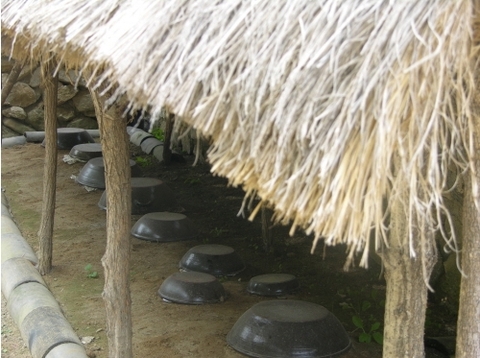
I remember when I was a kid, we spent days preparing and making kimjang kimchi so that it could last us through the winter and into spring. We first dug big holes in the ground big enough to hold our huge clay jars (so big that a child can fall in). In the meantime, we spent the day washing and brining 100+ napa cabbages and also preparing the ingredients for the stuffing. The next day we took these salted napa cabbages and inserted the stuffing in between each cabbage leaf. It was an enormous amount of work but boy…was it worth it. All winter long, we got to eat these amazingly crunchy and zingy and sometimes even ever so slightly frozen kimchi that came out of these jars in the ground. So why was it so tasty?
According to research, when it is buried in the ground, the temperature remains quite constant – at 32 – 35 F all winter long. At this temperature it takes about 20 days for the kimchi to fully ripen but it is definitely worth the wait.
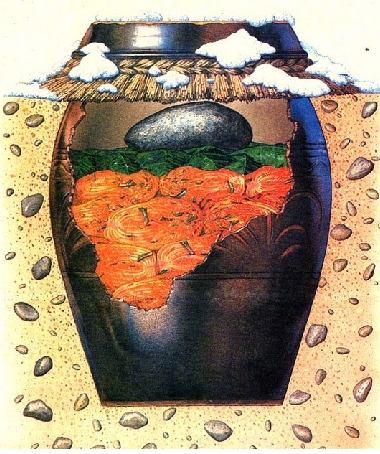
The clay jars are glazed to hold the moisture in but it can still breathe which allows just the right amount of air circulation to take away any heat produced from the fermentation (keeping the temperature stable). It also keeps the air tight enough for the bacteria to not grow too fast which helps the kimchi maintain its peak flavor for a longer period. The history of kimchi can be dated back almost 2000 years to the Goguryo Dynasty according to some historians, so you can see how long Koreans had time to refine the technique of kimchi making.
Since most Koreans now live in apartments and have no backyards to bury the jars, they have invented what is called a kimchi refrigerator. This fridge is different from the conventional refrigerator because the interior walls of the fridge are cooled instead of the air which helps to keep the interior at a more constant temperature. I own one and I have to say it is the next best thing to having your own kimchi jar in the ground. It even has temperature options for fermenting and then just storing it to prolong its freshness.
How to tell if Kimchi is ripe and ready to eat?
When a kimchi is not fully ripe, you are able to smell and kind of taste the individual ingredients – garlic, cabbage, radish, green onion, fish sauce, etc – as they have yet to fully integrate with each other. When it is fully ripened, the tastes of all the ingredients are well blended together and there is full flavor embedded in each cabbage leaf or vegetable pieces. There is also a slight sour taste with an added zing at the end. You can also no longer smell the raw ingredients individually but rather have a combined, wonderful slightly stinky smell that is unique to kimchi. Below is the chart that I promised earlier –
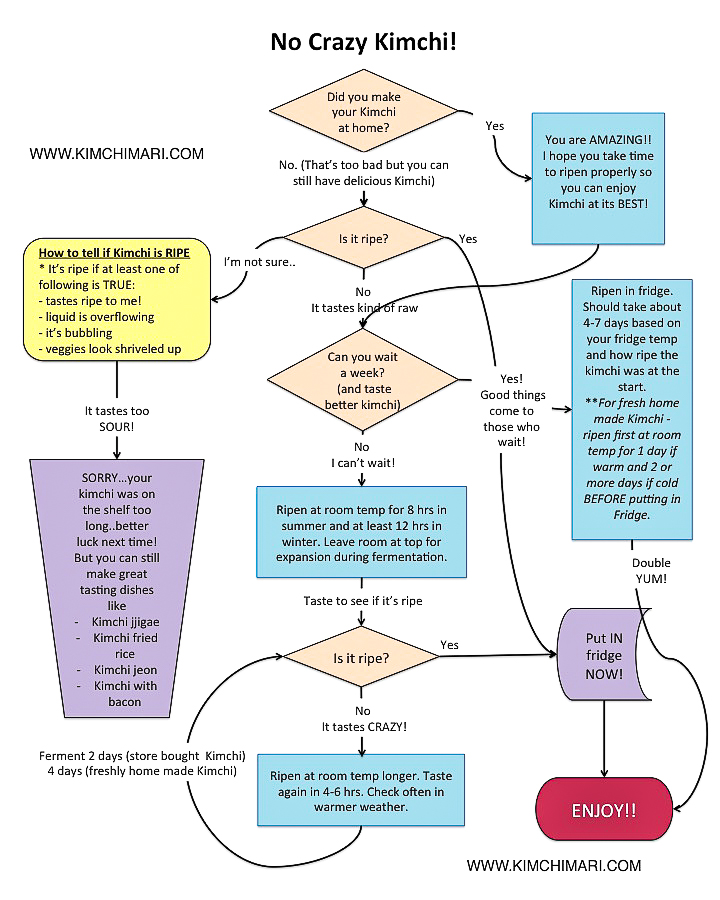
So how long can I store Kimchi in the fridge?
When stored at the ideal temperature that’s close to the freezing point of 32 F (-1 to 0℃), kimchi will keep for 3 months or more.
If the temperature of your fridge is higher (which is normally the case), it will probably keep for at least a month or more. Kimchi will start to taste just too sour when it starts to go bad – at which point, the best way to eat them is by cooking them by making Kimchi Jjigae, Budae Jjigae, Kimchi soft tofu stew, Kimchi fried rice and of course Kimchi Mari! Kimchi will sometimes go bad – it will have this whitish kind of film when it has been really too long and will also smell very pungently sour. You don’t want to eat it at this stage.
Can I take my Kimchi out from the refrigerator and leave it on the counter again to ripen further?
YES! Whether you have store-bought kimchi or made your own kimchi, you can take Kimchi out of the refrigerator at any time and let it ripen or sour further.
If it’s not ripe enough, it will take a long time to ripen in the fridge.
The whole point about my flow chart above was for people who have store-bought Kimchi. You may think it’s ready to eat because you got it from the store, but many times they are not fully ripe and therefore doesn’t taste as good.
Well, I hope this was helpful. Please share this info so that more people can learn how to ripen Kimchi properly and enjoy it at its best!
Take care,
XOXO
JinJoo
PS – if you want to learn more about Kimjang, here are two posts that teach you all about it!
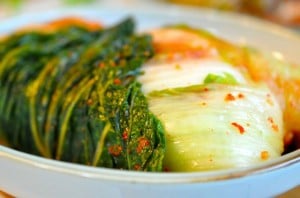 kimjang kimchi
kimjang kimchi- Kimjang Day: Part 1- How it’s done – I share my experiences and tips learned while doing Kimjang with my mother-in-law.
- Kimjang Day: Part 2 – Ingredients and Tips

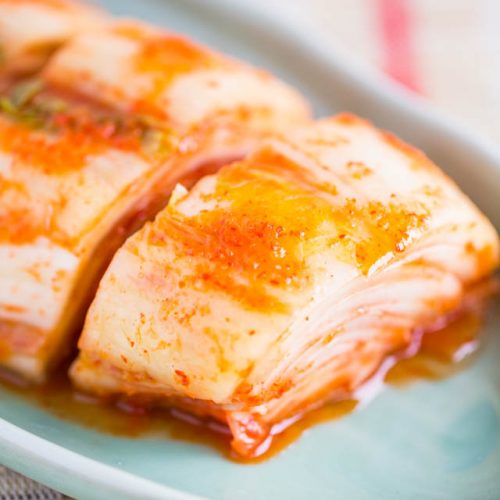
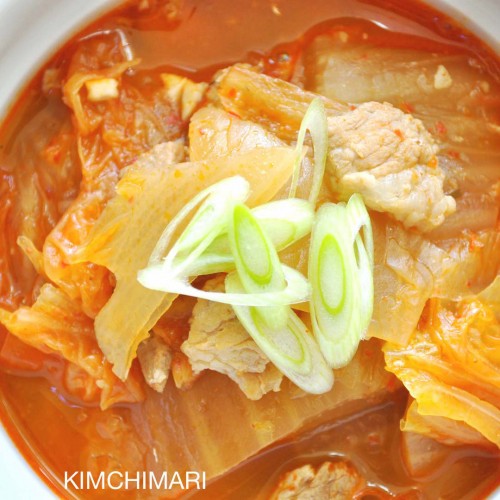
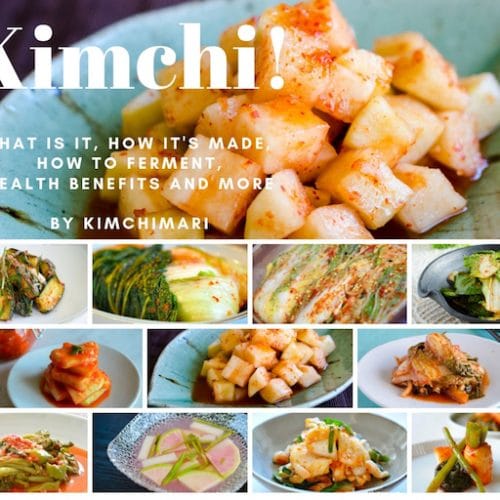
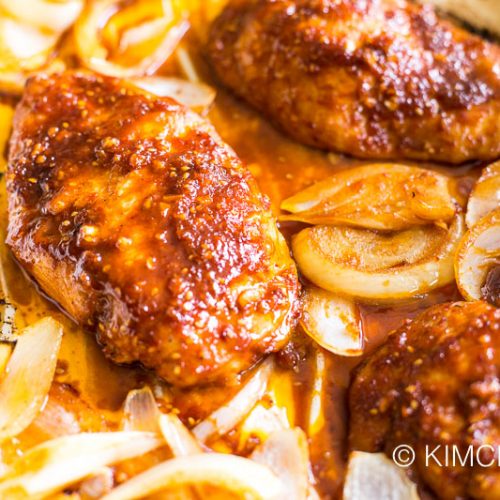
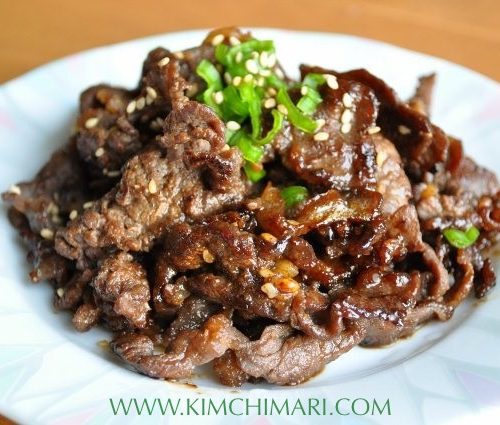
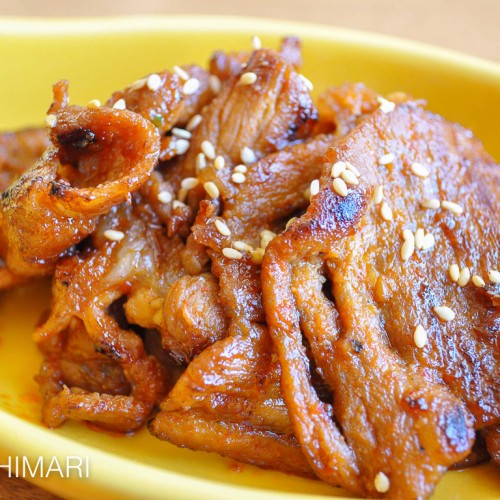
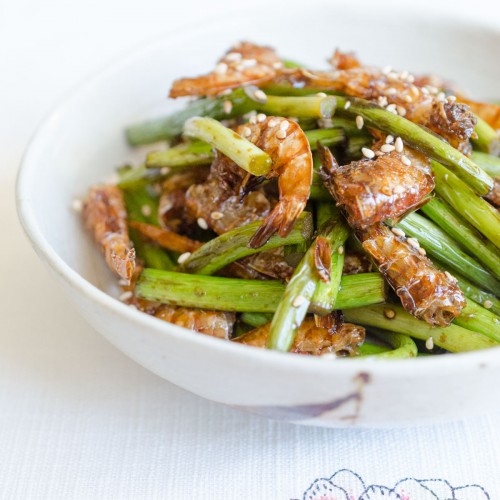

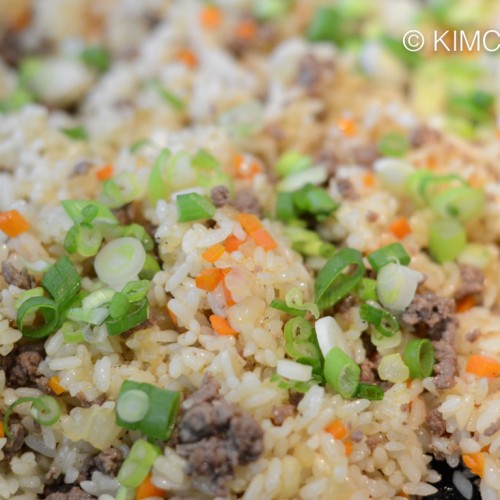










I just made kimchi for the first time, and I’ve had it at room temp in my cupboard for 48 hours. It’s now a bit fizzy and
Very liquidy – but tastes still like very strong garlic. ( not a totally bad taste just a bit strong and not like kimchi ) Should I leave it out longer to ferment do you think? Or let it ripen more in the fridge ? I’m nervous about leaving it out for too long.
Thank you ! 🙂
Hi Mariam, how warm is your climate? Hopefully it wasn’t too warm. In the summer you don’t want to leave it out more than a day but hopefully that’s not the case. Does it taste sour at all? The garlic flavor will go away as it ferments. I would say put in the fridge and check every couple days to see how it tastes. Good luck!
Hi,
I love the post and just have a few quick questions:
> I own a kimchi refrigerator, but the default temperature setting is far different from your recommendation at 6°C and on par with my regular fridge. Is this possibly because so many people tell me I can/should store fruits and veggies in it for longer life rather than because it’s ideal for kimchi?
> If my goal is specifically to have 무근지 (mugeun) kimchi, should I make temperature or recipe changes? Your post seems to suggest that 3 months is the aging limit, but the best kimchi jjigae I have ever had was made with 5 year old kimchi so….goals
> my kimchi refrigerator has multiple sides and temperature options to include fermentation. I’d rather use it than keep on the counter because of smells. Is the default of 15°C good or should I make adjustments?
Thanks^^
Hi, so I’m not sure what kind of kimchi refrigerator you have but usually they have a variety of temp settings to choose from, ‘low temp ripening’, ‘quick ripening’ to ‘storage’. Yes, 6 C is def. warmer than ideal kimchi storage temp. As for fruits/veggies having longer life in a kimchi fridge is partly because of the slightly lower temperature but has more to do with the fact that kimchi fridge is not cooled by cold air, rather cooling of the fridge box. Which means the veggies and fruits don’t dry out as much as a regular one.
Mugeunji 묵은지 – I would recommend buying a good quality, fresh cabbage, not too thick and using less seasoning, little saewoojeot but a little more salt (salt keeps things from rotting). 3 months is certainly not the aging limit, I only said 3 months assuming on the average that’s how most kimchi will still be good to eat. Depending on many factors your kimchi can spoil sooner or def. last longer but I’m just saying it’s like to last AT LEAST 3 months. If you keep your kimchi at the ideal lowest temperature and made with ideal seasonings, it can certainly last longer than 3 mos. I made some white kimchi in Nov 2018 and it is still good for kimchi jjigae.
I am not sure what you mean by is the default for 15 C good for what? Just choose 저온숙성 low temp ripening if you can. it will take much longer to ripen than leaving it out on the counter but if that’s what you want to try you can. Sometimes though, if you keep in such a cold temp right away, the fermentation can stall and doesn’t ripen for weeks. That’s why most Koreans will ripen it on the counter for at least overnight to a day or two to jump start the fermentation. But up to you – 15 C should be good to start and then change to lower temp after it starts to ripen.
thanks
Hi JinJoo,
I’m so glad I found this post! I’ve never tried kimchi before but, I’ve always wanted to try it as I enjoy sour food. So I made kimchi for the first time a couple of days and let it sit at room temperature for exactly 24 hours before putting it in the fridge. It’s been in the fridge for a couple of days now and I got it out today to taste it. It’s definitely not sour yet. There’s a strong garlic taste and it has a slight bitter aftertaste. I’ve made quite a big batch so I really want to make it work so that I can try kimchi fried rice and kimchi jjigae (plus not let it go to waste). I plan on taking it out of the fridge and leaving it at room temperature to ferment more, so my question is how often I should check on it and should I keep the lid on or off whilst it is at room temperature? I currently have the kimchi in containers with airtight lids. Thanks in advance!
I’m so sorry for the late reply. I somehow missed it. So.. yes, it does sound like your kimchi has not fully ripened. And it’s fine to take them back out from the fridge for another day or more. You can check on it every 4 hrs or so. It’s best to keep the lid on. The less kimchi is exposed to air the better. But it will need room to expand so you should not have the lid so tight that it may burst. Allow some gas to escape while it ferments. Hopefully I’m not too late – wish you all the best with your kimchi. BTW, you used Korean cheonilyeom sea salt for Kimchi right? If you used regular sea salt (without the bittern being removed) – that could make your kimchi bitter.
Hello there!
I made kimchi for the first time ever! Yay! Thank you so much for the recipe and flow chart – I am so excited! It’s just gone into the fridge after standing at room temperature for 2 days. I live in Pretoria, South Africa, and on the public holiday that I decided to make kimchi, most shops were closed and I couldn’t get much of the correct ingredients, but I winged it with what I could find and I’m very excited nonetheless – the fresh kimchi tasted amazing already 😀
Thank you again and best greetings from SA!
Wow – all the way from South Africa!! I’m so glad you found me!! Hope your kimchi turns out good – thank you and greetings!
Hi, lots of interesting information about kimchi, I always try to get my kimchi sour but it never happens, I really like the sour taste but didn’t know till now that it should not be that way!
But this time when I tasted it after 2 days it taste somehow sweet😐 i did not add too much sugar or any sweet fruits.
Any advice?
Hi Sabba, different people like different tastes of Kimchi. Some love sour kimchi and that’s totally good! It’s just that once it starts to become sour then there’s limited time window where it will still taste good. Pretty soon, it will be too sour and not tasty. Tasting sweet is not bad, it you leave it out longer, it will eventually taste sour. I’m not sure what you want exactly? If you think it’s too sweet, next time just add a litte more salt?
Thank you so much for fast reply. Well, what I want and prefer is more of a sour taste, I will try to add more salt as you said.
Now I know there is nothing wrong with the sweetness, thank to you🌸
Sabba, you may have misread: if TOO sour, it’s past its prime.Mildly to moderately sour is where you want to be depending on your preference.
If you left it out 8-12 hrs and back in the fridge at 32 F, it won’t sour in 2 days. If you left it out at room temperature, the speed of fermentation depends on actual temperatures (faster at 80 vs 60 degrees). If it doesn’t sour >3 days at room temp or in 2-3 wks at 32 F, did you wear gloves while making the kimchi? The bacteria that ferments kimchi is Propionibacterium, a skin bacteria; I suggest not wearing gloves while making kimchi to properly seed the kimchi with Propionibacterium.